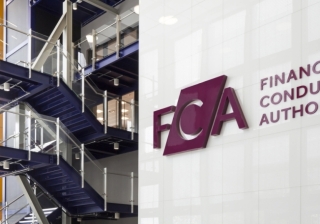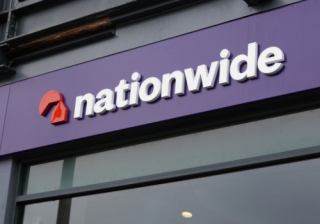House prices show 'resilience' with 0.8% rise in March: Halifax
On an annual basis, house prices were 1.6% higher than a year ago, slowing from 2.1% in February.

"The UK housing market continues to show resilience following the sharp downturn at the end of 2022"
The average house price increased by 0.8% in March, following a 1.2% rise in February, according to the latest Halifax house price index.
The annual rate of house price growth slowed to 1.6% after holding at 2.1% for the previous three months.
The typical house price is now £287,880, around 2% below the peak reached last August.
The figures show that house prices rose in all UK nations and regions last month, though the annual rate of growth continued to slow in most areas
With the exceptions of Greater London and the North East, all areas of the country experienced a slowdown in the rate of annual house price inflation.
Northern Ireland continues to report the strongest annual growth in house prices of 4.9%, followed by the West Midlands at 3.8%.
In Wales the rate of annual property price inflation has slowed to 1.0% and in Scotland the annual rate fell to 2.3%. Average house prices in London are up very slightly on this time last year (+0.1%) with the typical property now costing £537,250.
Kim Kinnaird, director at Halifax Mortgages, said: “The UK housing market continues to show resilience following the sharp downturn at the end of 2022, with average property prices rising again in March (0.8%).
“On an annual basis, house prices were 1.6% higher than a year ago, slowing from 2.1% in February. This is the weakest rate of annual growth in nearly three-and-a-half years (October 2019), having fallen markedly since June 2022’s peak of 12.5%.
“However, overall these latest figures continue to suggest relative stability in the housing market at the start of 2023 and align with many other recent industry surveys and data. This has been characterised by a partial recovery in activity and transactions, especially when compared to the significant drops seen at the end of last year, with latest Bank of England data showing mortgage approvals rising for the first time in six months.
“The principal factor behind this improved picture has been an easing of mortgage rates. The sudden spike in borrowing costs that we saw in November and December has now been largely reversed, and while rates remain much higher than the average of the last decade, across the industry a typical five-year fixed rate deal (75% LTV) is down by more than 100 basis points over the last few months.
“It’s also important to recognise that the labour market, a key indicator for house prices, remains strong, with unemployment at a historical low of 3.7%, and pay growth continues to look robust.
“Predicting exactly where house prices go next is more difficult. While the increased cost of living continues to put significant pressure on personal finances, the likely drop in energy prices – and inflation more generally – in the coming months should offer a little more headroom in household budgets.
“While the path for interest rates is uncertain, mortgage costs are unlikely to get significantly cheaper in the short-term and the performance of the housing market will continue to reflect these new norms of higher borrowing costs and lower demand. Therefore, we still expect to see a continued slowdown through this year.”
Carl Howard, group CEO of Andrews estate agents, commented: “A second straight monthly property price rise suggests a spring bounce, led by sellers who have stepped up and kept this market ticking over.
“They’ve had a few months now to adjust their eyes to a gloomier outlook, and a realistic attitude on prices is helping grease the wheels and get more deals over the line.
"Meanwhile demand for properties is creeping up from a low base as buyers warm to a market moving in their direction and make more enquiries.
“Although interest in homes is down from the same time last year, sales are being supported by a boost in supply, particularly in cheaper price brands. Mixed with a surge in rental prices, this should also encourage more buyers into the market.
“There are still storm clouds lingering, particularly around affordability, but lending rates are continuing to soften, meaning less of a jolt for first-time buyers and owners whose current fix is coming to an end.”
Nicky Stevenson, managing director at national estate agent group Fine & Country, added: “Spring has started strongly with a robust set of house price results, and this coincides with a welcome uptick in demand as mortgage rates continue to ease.
“These are the kind of figures that will give sellers confidence that now is a good time to list their property, though many are also being realistic about pricing and buyers’ expectations for a negotiation.
“All the signs point to the property market emerging from the challenges it has faced since the Mini Budget, with the weather set fair for a strong showing over the next few months, in what is traditionally a very busy period.
“Although demand is increasing, so is housing stock. We’re starting to see signs of a much healthier market in terms of supply and demand than we saw during the mad rush over the last two years.
“In some areas there are many more properties for sale than this time last year when the market was still in the middle of a historic boom in demand.”

Breaking news
Direct to your inbox:
More
stories
you'll love:
This week's biggest stories:
FCA
Firms required to report complaints involving vulnerable customers under simplified FCA rules

Santander
Santander joins mortgage price war with new rates from 3.51%

FCA
FCA sets out timeline for mortgage rule changes

State Pension
Budget: Government signals income tax write off for state pensions exceeding personal allowance

This week's biggest stories:
FCA
Firms required to report complaints involving vulnerable customers under simplified FCA rules

Santander
Santander joins mortgage price war with new rates from 3.51%

FCA
FCA sets out timeline for mortgage rule changes

State Pension
Budget: Government signals income tax write off for state pensions exceeding personal allowance

FCA
FCA announces new measures to support growth of mutuals sector

Nationwide
FCA fines Nationwide £44m for inadequate financial crime controls
